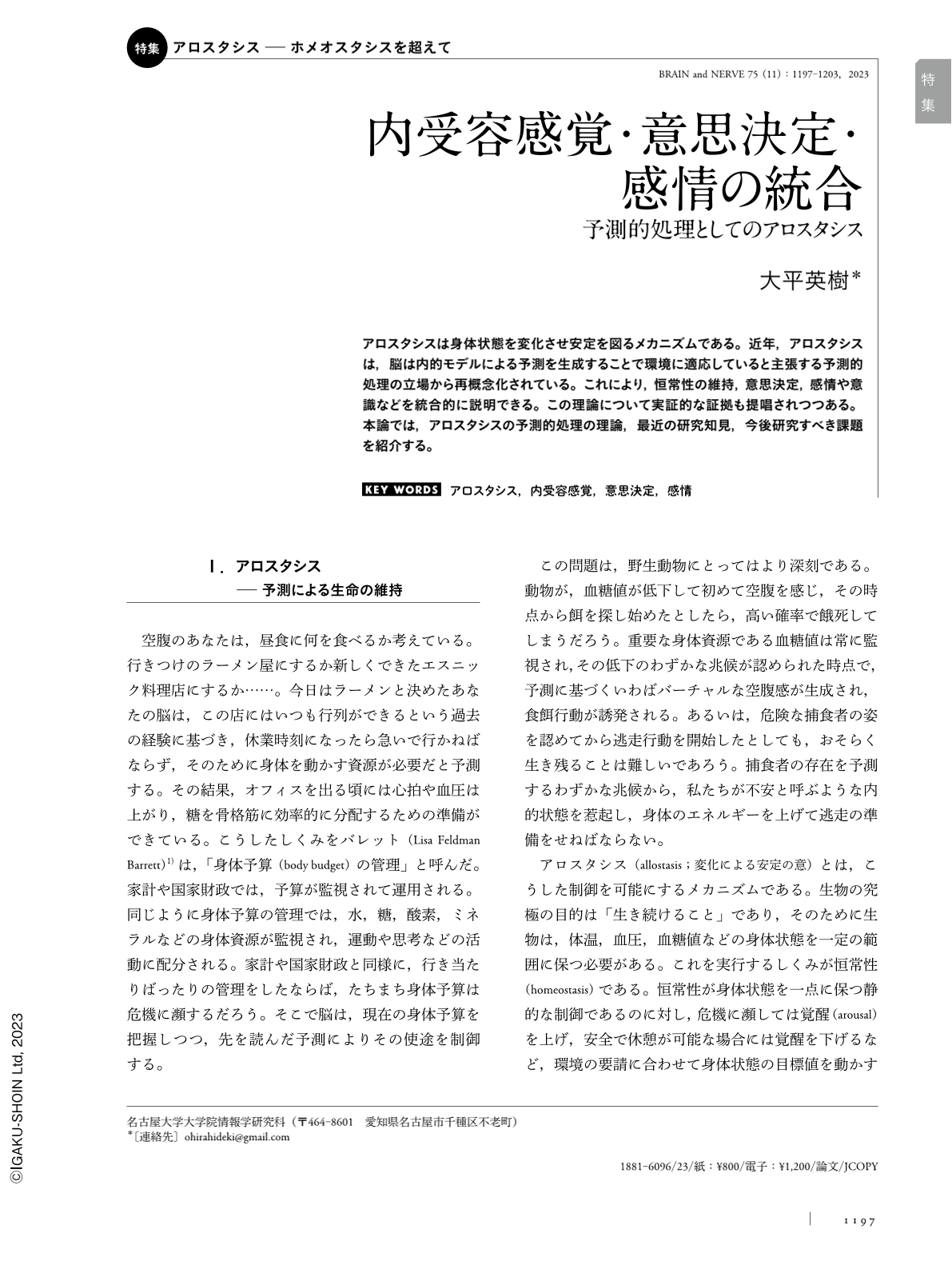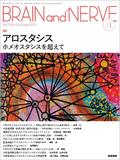Japanese
English
- 有料閲覧
- Abstract 文献概要
- 1ページ目 Look Inside
- 参考文献 Reference
アロスタシスは身体状態を変化させ安定を図るメカニズムである。近年,アロスタシスは,脳は内的モデルによる予測を生成することで環境に適応していると主張する予測的処理の立場から再概念化されている。これにより,恒常性の維持,意思決定,感情や意識などを統合的に説明できる。この理論について実証的な証拠も提唱されつつある。本論では,アロスタシスの予測的処理の理論,最近の研究知見,今後研究すべき課題を紹介する。
Abstract
Allostasis refers to the mechanism by which the brain changes bodily states to adapt to the environment in order to achieve stability or homeostasis. This concept was originally proposed by Sterling and Eyer in 1988. Recently, allostasis has been reconceptualized from the viewpoint of predictive processing, a theory arguing that the brain regulates perception and motor movement by generating predictions through inner models of the external world and self and minimizing the prediction error between the predictions and sensory signals. This idea provides integrated explanations of a wide range of phenomena, including homeostasis, decision-making, and the accompanying emotions and consciousness. Although this theory is a hypothesis, empirical evidence has been proposed in recent years. This article introduces the theory of predictive processing of allostasis, recent related research findings, and issues to be examined in the future.

Copyright © 2023, Igaku-Shoin Ltd. All rights reserved.


